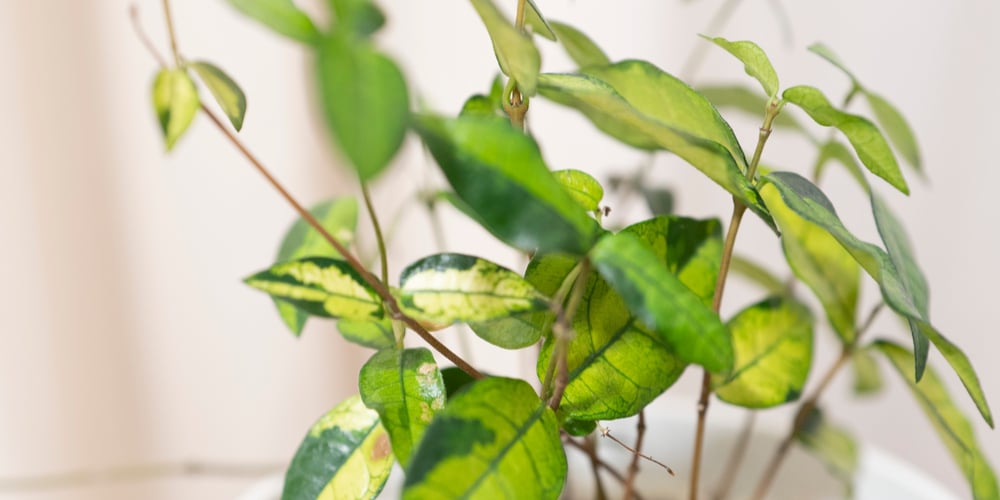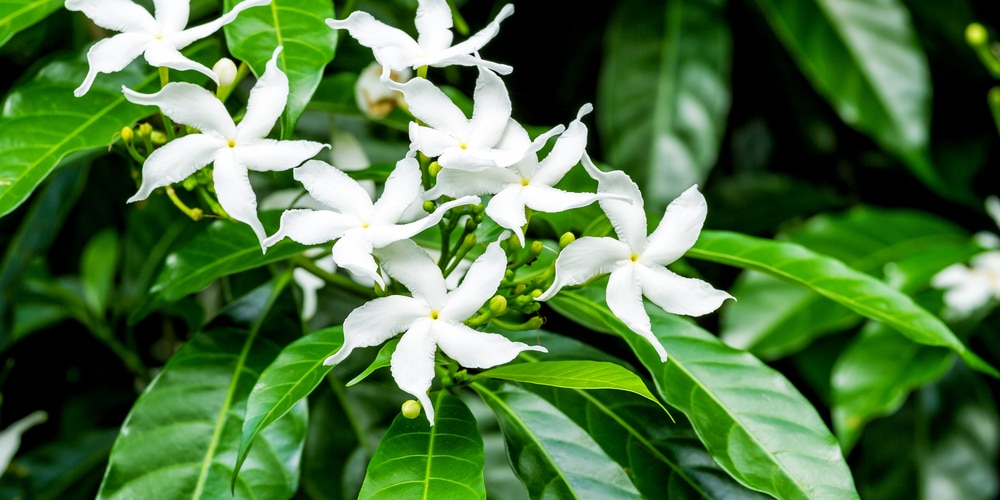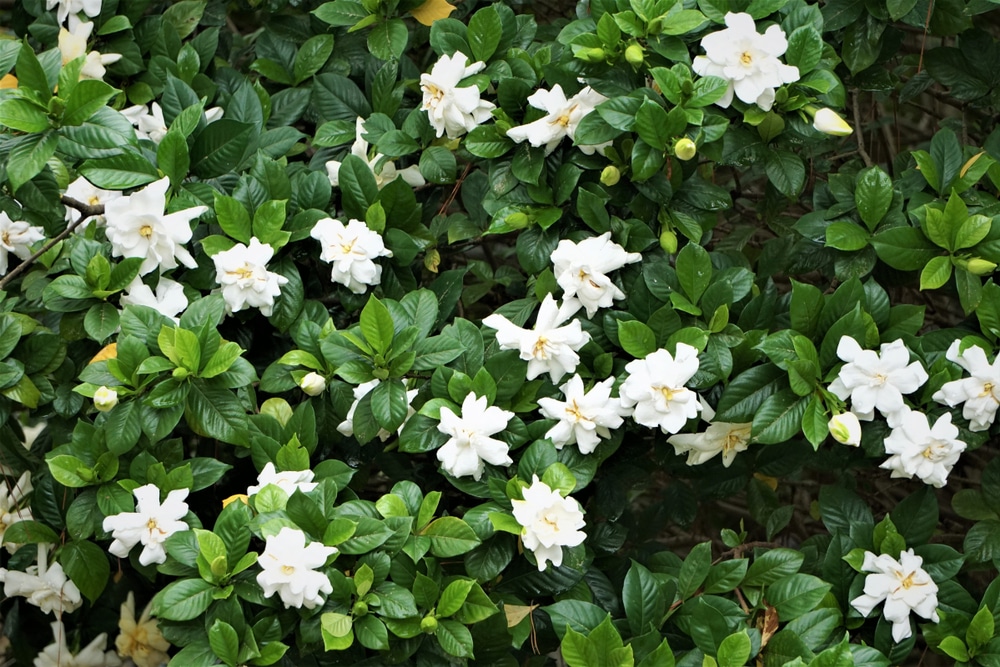Nothing compares to the scent of jasmine, but what do you do when you have a thriving jasmine plant and its flowers won’t bloom? You’re left wondering, “why won’t my jasmine bloom?”
It can be troubling to pour care and attention into a plant and have something seemingly wrong with it. Whether you’re growing your jasmine inside or out, several factors may cause your jasmine plants not to bloom.
Nitrogen Heavy Fertilizer

Nutrients are vital in the plant world, and jasmine is no exception. Jasmine plants in a rich fertilizer typically won’t need any additional nutrients; a fertilizer rich with phosphorus is generally all the plant needs to jump-start blooming.
If your fertilizer has too much nitrogen, it could negatively affect plant growth. The nitrogen will direct most of the growth to the plant’s leaves, taking nutrients away from the blooms.
Growth Conditions
Jasmine requires a specific range of temperature during the day to produce flowers. Make sure you place your jasmine plant in a location with good air circulation and a temperature between 65 and 75 degrees Fahrenheit.
It’s also important to note that jasmine must be rootbound to bloom. If you’ve recently repotted your jasmine plant, it may just be waiting for the roots to settle into its new container before it begins flowering.
Jasmine is also sensitive to its drainage and quickly succumbs to drought stress. If the pot doesn’t drain regularly, or if the soil is dry, the jasmine plant won’t bloom. Ensure your jasmine grows in a carefully irrigated and regularly watered pot to keep the soil at a consistent moisture and ideal for blooming.
You will also want to prune your jasmine plant often and heavily. A correct pruning regimen will encourage more and healthier blooms to grow.
The Importance of Daylight
Like many plants, the amount of light your jasmine receives determines when and how the plant blooms. Jasmine thrives in full sun (approximately 4-6 hours daily) and partial shade (approximately 2-4 hours each day).
If you’re growing your jasmine indoors, it’ll need space in a south-facing window. Fluorescent lighting can help if the plant won’t receive adequate sunlight during the day. These ideal conditions help the plants to bloom beautifully, so check your plants lighting to determine if this could be a factor in why your jasmine plant won’t bloom.
Different Species of Jasmine
The species of jasmine you own will determine when the plant flowers since different species of jasmine flower at various times of the year. The Common Jasmine flower prefers warmer temperatures and blooms in early spring, sometimes blooming again in the summer.
Winter Jasmine blooms from November to March and stays beautiful all winter. These plants are hardier and one of the few plants that can flower during the cold winter months.
Because of their fragility and sensitivity to cold, Many Flowered Jasmine plants are usually houseplants and not found in a garden. These plants typically bloom from April to June indoors.
It’s important to check the specific type of jasmine plant you have to determine the ideal growth environment and ensure you’re meeting what conditions it needs to thrive.
Pruning
It’s essential to prune your jasmine plant during the correct time to ensure hearty blooms and ideal growing conditions. Pruning jasmine during the spring or summer months may cut back the developing growth and buds, resulting in a jasmine plant that won’t bloom.
The best time to prune jasmine is in the fall, as soon as possible after the plant has finished flowering so the vines can develop for the following year. Remove any stems or leaves that are damaged or diseased. Proper pruning timing and techniques may help your jasmine bloom.
Final Thoughts
With the proper research, techniques, and growing conditions, your jasmine will soon be on its way to beautifully blooming flowers and you’ll no longer need to wonder, “why won’t my jasmine bloom?” Know your plant, know its needs, and show a little dedication, and you will likely have beautiful and fragrant flowers to show for it.

